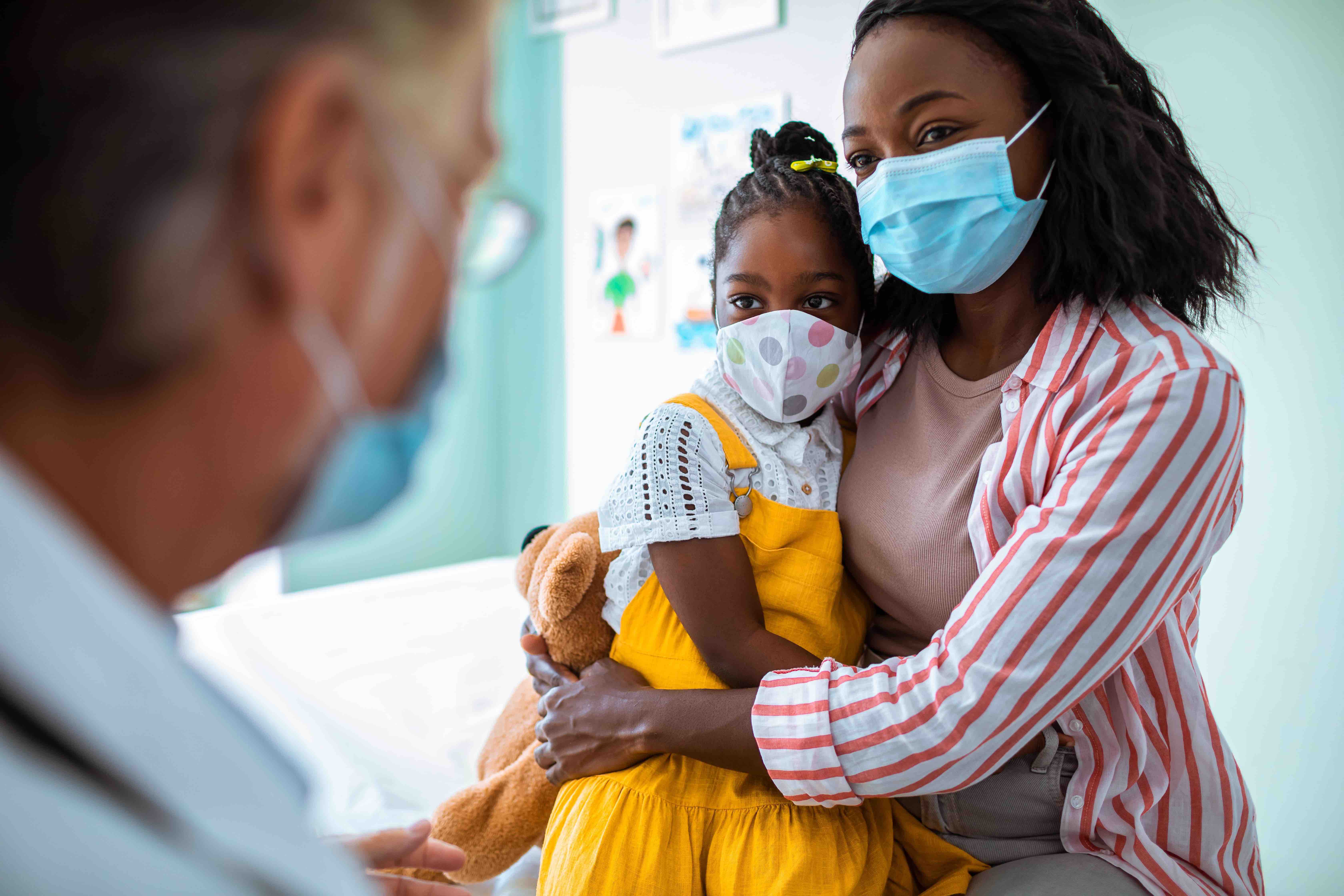| | | | | | | Presented By PhRMA | | | | Vitals | | By Caitlin Owens ·Feb 24, 2021 | | Good morning. Today's word count is 898, or a 3-minute read. | | | | | | 1 big thing: For children, the COVID surge isn't over |  Children's hospitals across the country say they're still seeing a surge of kids suffering from a serious illness that typically follows coronavirus infections. The big picture: Severe coronavirus infections in children remain extremely rare, compared to the risk to adults. But persistent side effects from those infections mean that kids' hospitalization rates don't exactly mirror adults'. Even as coronavirus hospitalizations decline overall, children's hospitals say they're still seeing large numbers of kids suffering from multisystem inflammatory syndrome, commonly known MIS-C, — a serious illness that generally occurs several weeks after a child is infected with the coronavirus. - "As the population in general seems to have fewer active cases, we are seeing more children being admitted with COVID-related problems, but most of those ... are children who have MIS-C," said Rob McGregor, chief medical officer at Akron Children's Hospital.
What they're saying: Hospitals say the disease seems to be more common now than it was earlier in the pandemic, and children are sicker now than they were in earlier surges. - Unlike other children's hospitals interviewed by Axios, Texas Children's has also seen more severe cases of acute COVID too.
- "It feels like ... we have seen in the last two three months patients who are sicker when they present with COVID than we did in the early experience," said Lara Shekerdemian, chief of critical care at Texas Children's Hospital.
What we're watching: The children's hospitals said that, based on previous trends, they expect the number of hospitalizations to fall in the coming weeks, a delayed result of the coronavirus's lower community prevalence. - "I would expect peds admissions to start to fall. Now, the big unknown here for everyone is how these new variants are going to affect things," said Ronald Ford, chief medical officer at Joe DiMaggio Children's Hospital.
Go deeper. |     | | | | | | 2. What the new normal may look like |  | | | Illustration: Eniola Odetunde/Axios | | | | Public health experts generally agree that the coronavirus is here to stay — which raises the question of when the pandemic will be over, The Atlantic's Alexis Madrigal writes. Why it matters: It's highly unlikely that the U.S. will vaccinate enough people to completely eradicate the virus, and even more unlikely that this will happen worldwide. That means that we have to decide what level of risk we want to live with. What they're saying: "Fewer than 100 deaths a day—to mirror the typical mortality of influenza in the U.S. over a typical year—is an appropriate goal," Monica Gandhi, an infectious-disease specialist at UC San Francisco, told Madrigal. - That'd correlate with only a few thousand new cases a day.
Reality check: We're nowhere near those numbers yet. What we're watching: It could take months for the number of Americans with some form of immunity to the virus — whether through vaccination or infection — to drive daily coronavirus deaths below 100. - "Until then, we'll be confronted with a different sort of risk: that, for some, the pandemic feels like it's over long before it actually is," Madrigal writes.
- "Just as the country has never taken a unified approach to battling COVID-19, we may very well end up without a unified approach to deciding when it ends."
|     | | | | | | 3. NIH to fund research on long COVID | | National Institutes of Health director Francis Collins announced Tuesday that the agency is launching an initiative to study long COVID — the lingering, long-term symptoms some people experience after they've had the virus. Why it matters: The causes of these symptoms — which can include fatigue, brain fog, shortness of breath, fevers and sleep disorders — aren't well understood, and doctors have been calling for a serious research effort for months, Axios' David Nather writes. Details: Collins said the research initiative will try to answer questions like how many people have long-term symptoms, what causes them, why do some people get them and not others, and whether the virus sets off changes that makes people more vulnerable to other conditions. - "We do not know yet the magnitude of the problem, but given the number of individuals of all ages who have been or will be infected ... the public health impact could be profound," Collins said in the announcement.
Of note: Axios' Eileen Drage O'Reilly wrote a great story last month about the struggles of people with long COVID and the need for focused research on it. We are thrilled that the NIH listens to Eileen. |     | | | | | | A message from PhRMA | | We are committed to being a part of the solution | | |  | | | | As we usher in a new Congress and new administration, we can all agree that people need quality, affordable health coverage that works when they need it. - We are focused on solutions that help patients better afford their medicines and protect access to innovation today and in the future.
| | | | | | 4. California COVID strain may be more infectious | | A new coronavirus variant in California is more contagious than the initial strain, two studies confirm, the New York Times writes. Yes, but: Researchers still don't know whether this variant is deadlier, or causes more severe illness, Axios' Marisa Fernandez writes. Background: Scientists have been monitoring the California variant, known as B.1.427/B.1.429, since its discovery in December. - And though it's been tracked in most of the U.S. and several other countries, its spread is predominantly in California, unlike the B.1.1.7 variant from the U.K., which has spread nationwide.
Driving the news: A study from researchers at University of California, San Francisco, which has not yet been peer reviewed, estimates that cases caused by the variant are now doubling every 18 days. - Another study showed that people who were infected with the California variant had viral loads twice as high as other patients. It's also possible the variant could lessen the effectiveness of certain antibodies, it said.
|     | | | | | | 5. Catch up quick |  | | | Illustration: Aïda Amer/Axios | | | | Congress held a candlelight vigil on the steps on the U.S. Capitol Tuesday evening in honor of the Americans who have died from the coronavirus. California residents in affluent communities are taking up COVID-19 vaccination appointments meant for underserved communities of color, according to a report by the Los Angeles Times. Moderna and Pfizer plan to significantly boost vaccine shipments to the U.S. government by this spring, according to written testimony from company executives released Tuesday ahead of a House committee hearing on vaccines. |     | | | | | | A message from PhRMA | | Biopharma is committed to being a part of the solution | | |  | | | | As we usher in a new administration and Congress, there are many things on which we can all agree, like building a more just, equitable society. | | | | Don't forget to submit your dogs! | | | | Axios thanks our partners for supporting our newsletters.
Sponsorship has no influence on editorial content. Axios, 3100 Clarendon Blvd, Suite 1300, Arlington VA 22201 | | | You received this email because you signed up for newsletters from Axios.
Change your preferences or unsubscribe here. | | | Was this email forwarded to you?
Sign up now to get Axios in your inbox. | | | | Follow Axios on social media:    | | | | | |







No comments:
Post a Comment